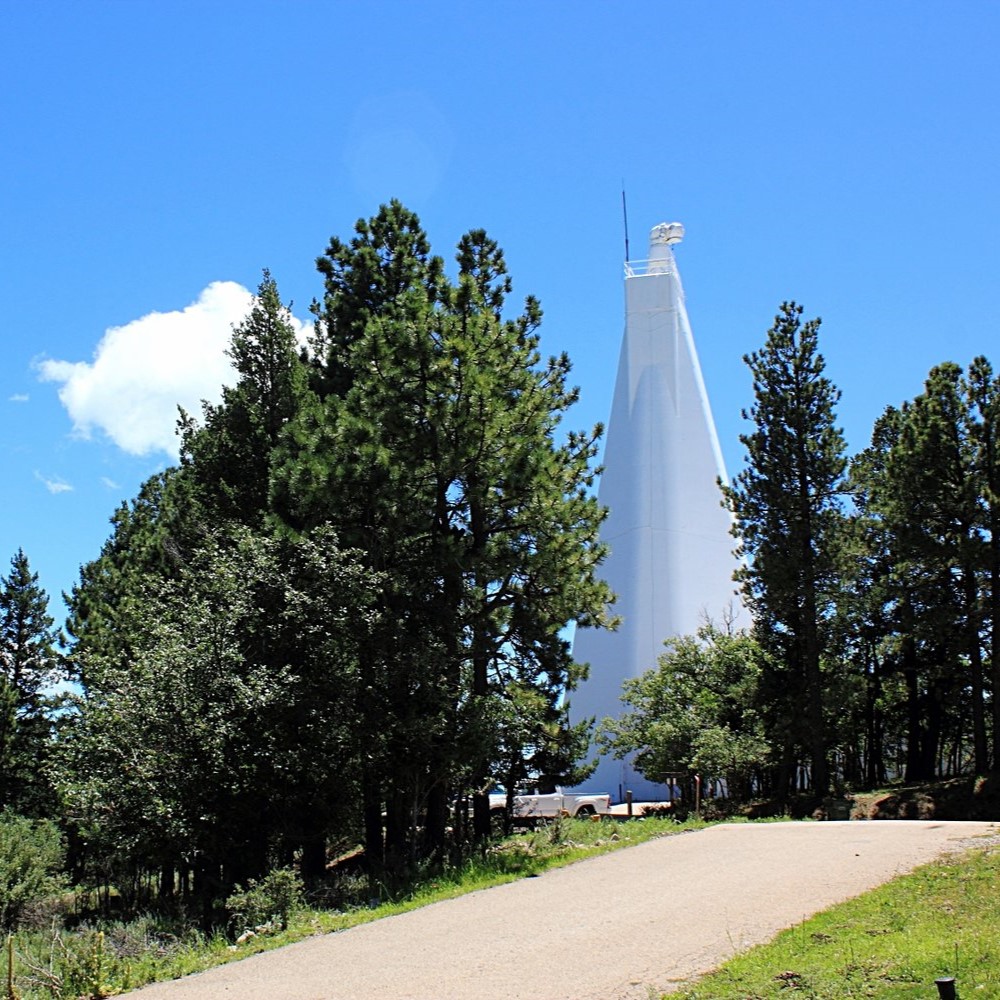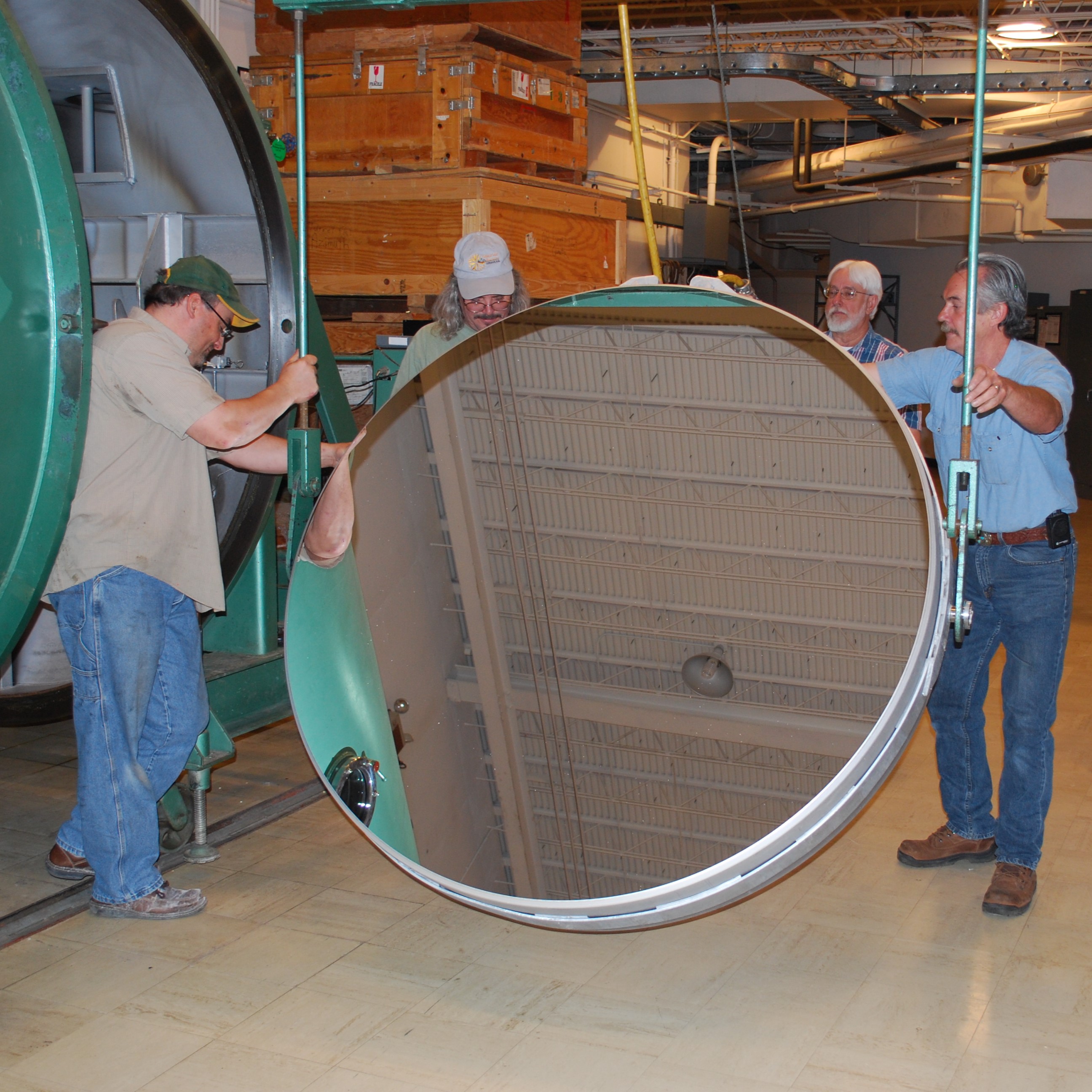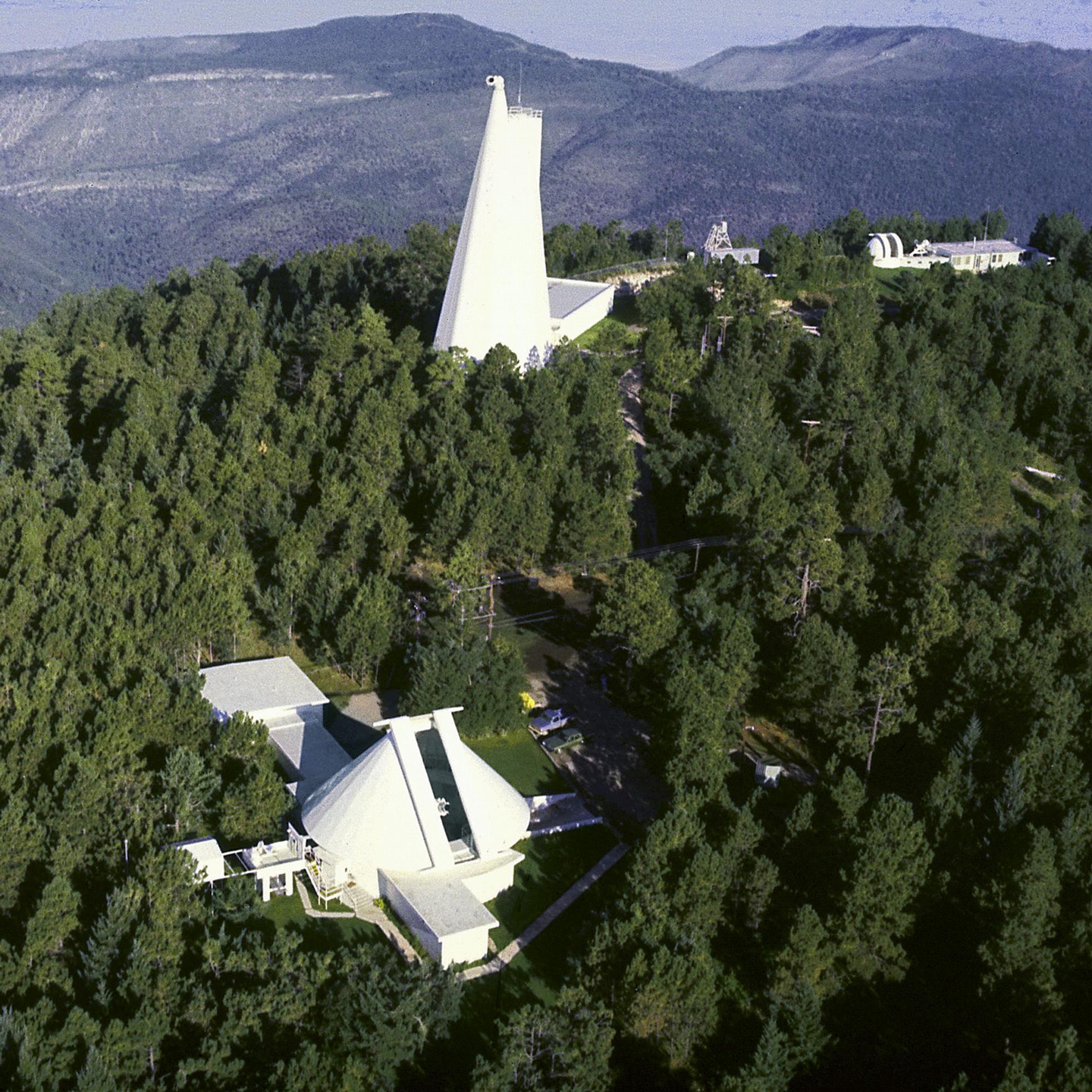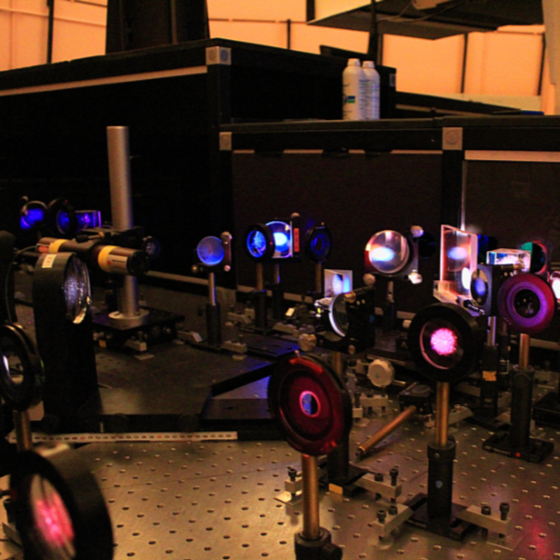Holiday Closure Notice:
December 22, 2025 - January 5, 2026: The Visitor Center and observatory grounds will be closed from Monday, December 22, through Sunday, January 4, for the NMSU holiday break. We look forward to welcoming you back on Monday, January 5!
Sunspot Solar Observatory
Located on Sacramento Peak in Sunspot, New Mexico, the Observatory is home to many important scientific discoveries, unique solar observing facilities, and breathtaking views. As part of the Lincoln National Forest, Sunspot Solar Observatory features not only solar telescopes of the past and present but also a diverse collection of native plants and wildlife, including mule deer and over 200 species of birds. It's no wonder why the U.S. Air Force chose this location to begin construction of the Observatory in the late 1940's (then known as Sacramento Peak Observatory). From the Grain Bin Dome to the Richard B. Dunn Solar Telescope, the Observatory continues to help astronomers study our nearest star. The Observatory's commitment to solar science leadership and public education makes Sunspot Solar Observatory an exemplar of scientific excellence.
Discover More Contact Us
Discover more about the unique community of Sunspot, New Mexico, and its relationship to many exciting astronomical developments. This remote space has connections to the United States Air Force, the National Forest Service, Apache Point Observatory, and NASA. A namesake of the nearby National Solar Observatory, Sunspot is a location rich with history dating back to the late 1940's, just after the end of World War II.
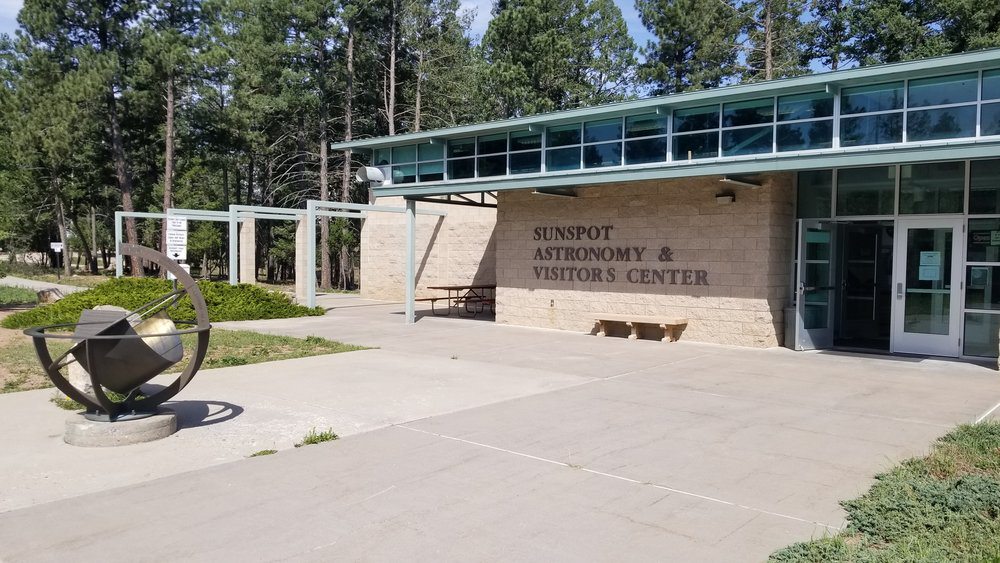
Located at an altitude of 9200 ft (2800 m) in the scenic Lincoln National Forest, Sunspot Solar Observatory is home to gorgeous vistas, historical landmarks, and one of the largest active solar telescopes in the world. Visitors can explore our interactive astronomy museum, walk nature trails, and enjoy lunch at our picnic tables. As of 2024, the tour schedule is as follows:
Weekdays: Mondays, Tuesdays, Thursdays, and Fridays from Noon to 2pm.
Weekend Tours: 1st weekend of every month (Saturday & Sunday) Noon to 2pm.
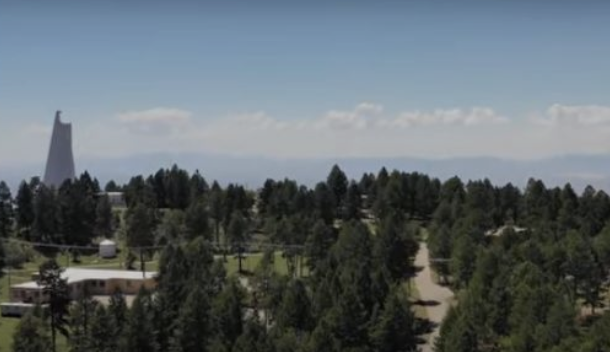
Learn about the history surrounding the Observatory from its humble beginnings in 1947 to housing a world-class telescope (DST) and becoming a leading facility in solar science research. Once home to over 100 employees, the Observatory and its facilities appear as relics of the not-so-distant past. And it is by understanding the historical importance of the site that we can envision its purpose moving forward.
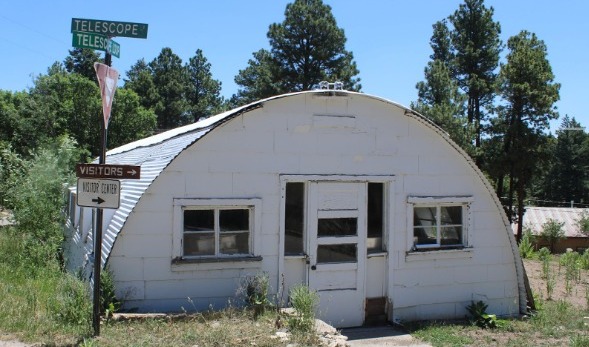
Sunspot is a community made up of many brilliant minds from the astronomers collecting data at DST to the Astronomy Professors teaching students on site. Many researchers travel from all over the world to utilize the open optical bench system at DST, often making the Observatory their home for a short while. Although set in a remote location, those who work at Sunspot are proud to be part of its remarkable mission.
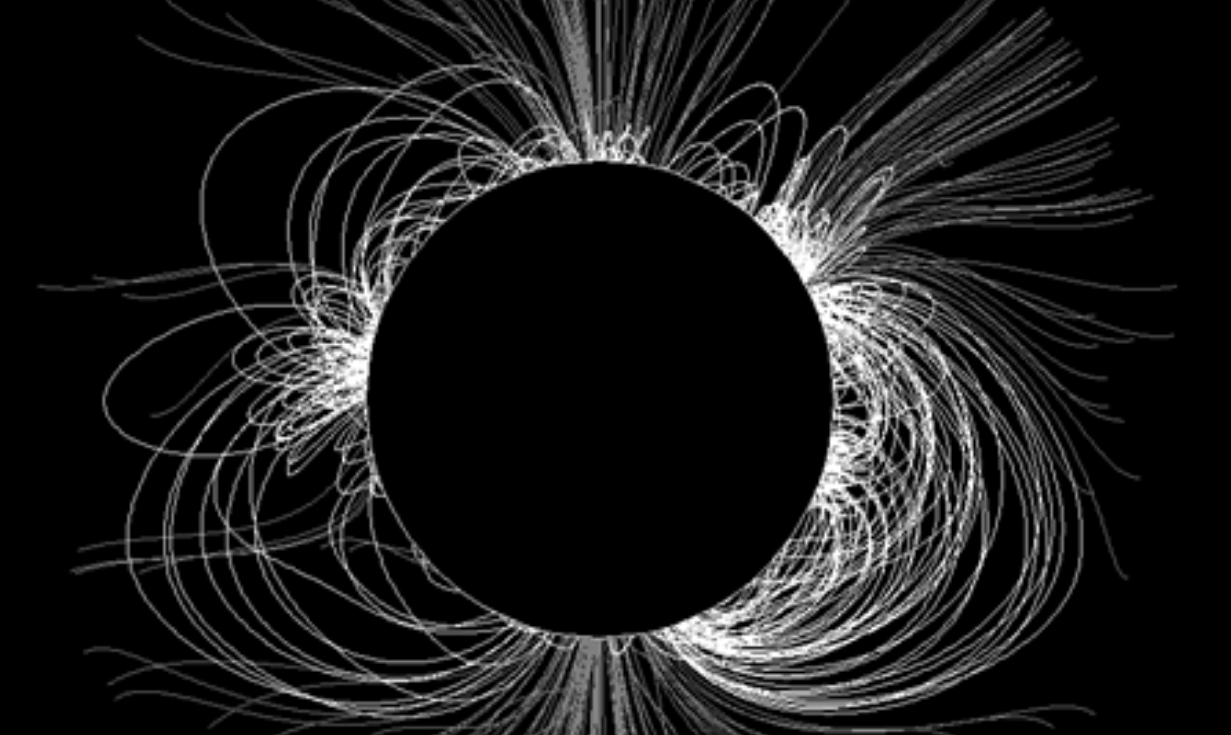
Learn about the state-of-the-art instruments Sunspot scientists use to study the Sun. Contributed by universities all around the world, these instruments help to make the Dunn Solar Telescope a distinctive site to study everything from prominence to solar flares to granules on the Sun's photosphere. Our unique telescope design allows for a high degree of flexibility in our instrumental use and setup.
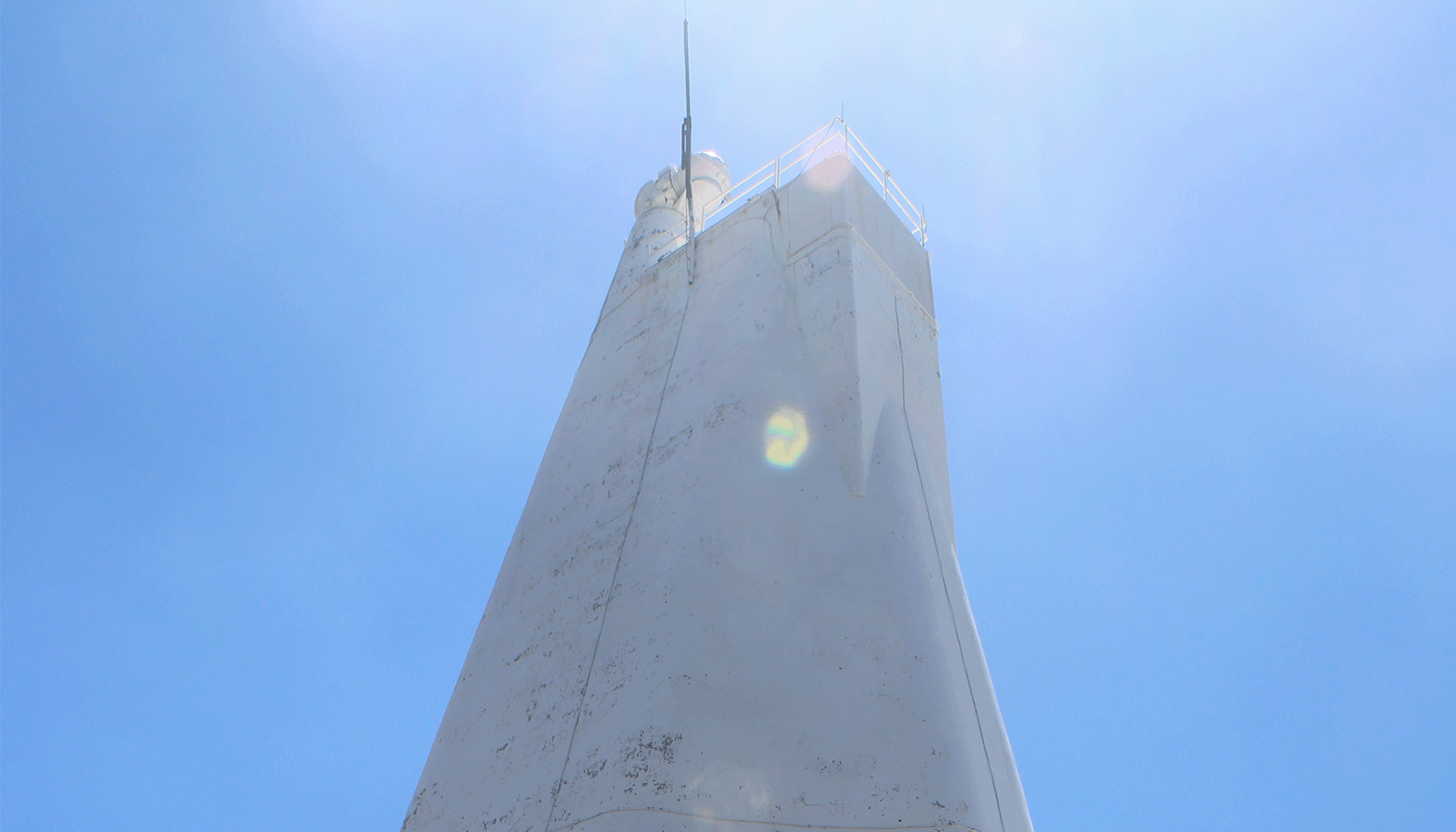
We have many solar telescopes on site, some of which are still used to collect data from celestial objects and some which have been decommissioned. While walking around Sunspot Solar Observatory, visitors can see and marvel at the facilities that were once used by scientists to collect important information about the sun. Did you know that the sun is the only star accessible for detailed study?
Department of Astronomy
Get to know New Mexico State's Department of Astronomy, which maintains operations at the Richard B. Dunn Solar Telescope. This department was the driving force behind the establishment of a large aperture telescope in the area, making way for the Apache Point Observatory. For decades, NMSU's Astronomy Department has been responsible for both the instruction of future astronomers and for significant scientific discoveries.
Latest News

NMSU astronomy professor’s NSF grant supports mixing art and science
NMSU art student Kayla Blundell partnered with astronomy assistant professor Juie Shetye to create a sculpture inspired in a solar eclipse, merging science and art. Her interactive piece, now housed in the Sunspot Solar Observatory, represents the Sun’s wavelengths and features a 3D-printed moon model. The project also includes hands-on Science activities for public outreach.
Read More